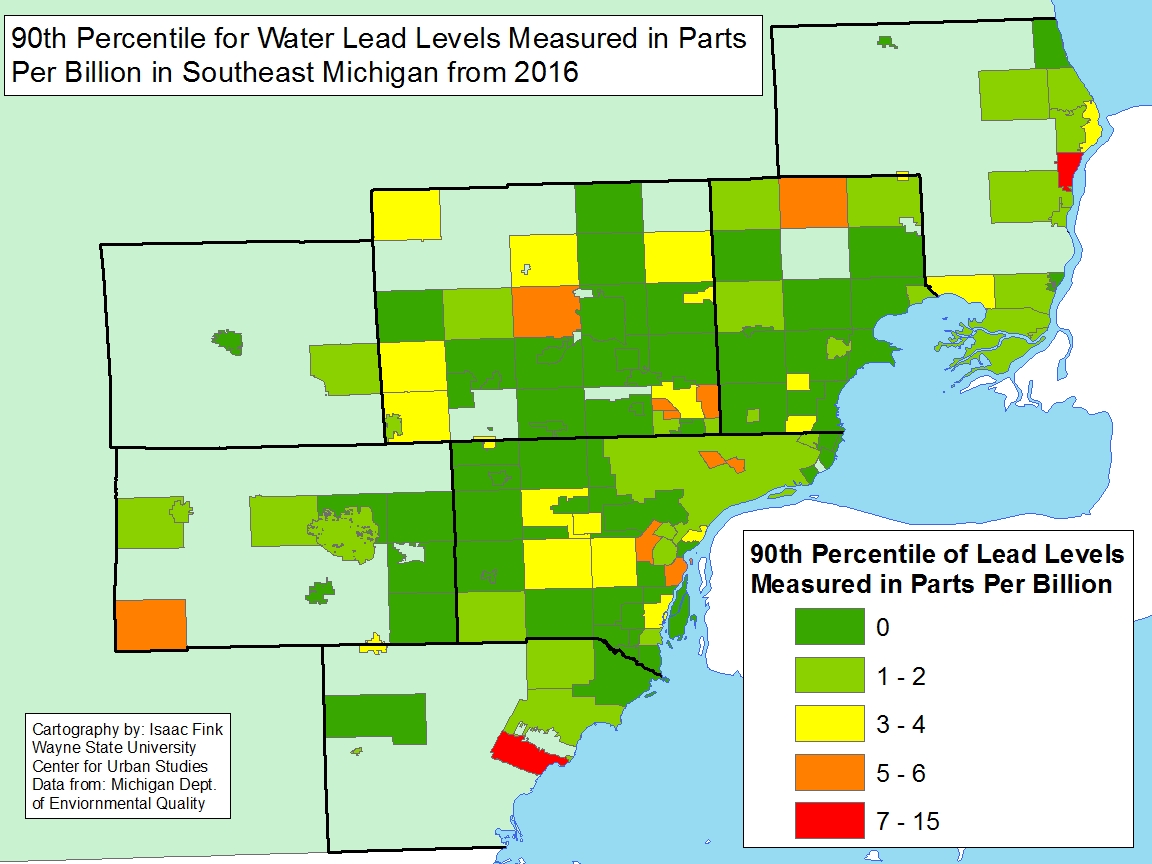In 1991 the Lead and Copper Rule was implemented by U.S. Environmental Protection Agency as a means to help prevent exposure to lead and copper. According to the rule, if lead concentrations in drinking water exceed 15 parts per billion (ppb) in more than 10 percent of customer’s taps sampled, additional controls must be taken to prevent corrosion. According to a recent MLive article, which compiled Michigan Department of Environmental Quality lead testing data from water systems throughout the State of Michigan, the City of Monroe was the only public water system in Southeastern Michigan that had lead levels that reached the federal threshold. According to the data, which states testing ended on Dec. 31, 2016, the City of Monroe’s 90th percentile for lead was 15 ppb. For comparison, the data showed that between January and June of 2017 Flint’s 90th percentile for lead was 7 ppb.
In Southeastern Michigan, there were only three public water systems (for which data was available) with lead concentration levels above Flint’s. Those systems were located in:
- Grosse Pointe Shores: 9 ppb
- Capac: 7ppb
- Marysville: 12 ppb
Conversely, there were 77 public water systems in Southeastern Michigan for which data was available, with zero lead tested in the water system.
While the data shows the lead levels are improving in Flint, this data also shows how the region’s, and the state’s, water systems need continuous monitoring and the infrastructure needs regular maintenance. According to a Brookings article (link), the federal government is only responsible for less than a quarter of the spending on all 51,000 plus public water systems in the country. This means, local and state governments must bare the brunt of the cost to ensure citizens have access to a clean, reliable water source. In Southeastern Michigan, a large portion of the region’s water system is overseen by the Great Lakes Water Authority. This government agency is regional authority that was created to ensure larger purchasing power is available for infrastructure improvements. This is one step the region has taken in recent years to ensure clean water remains available to the residents of Southeastern Michigan.
